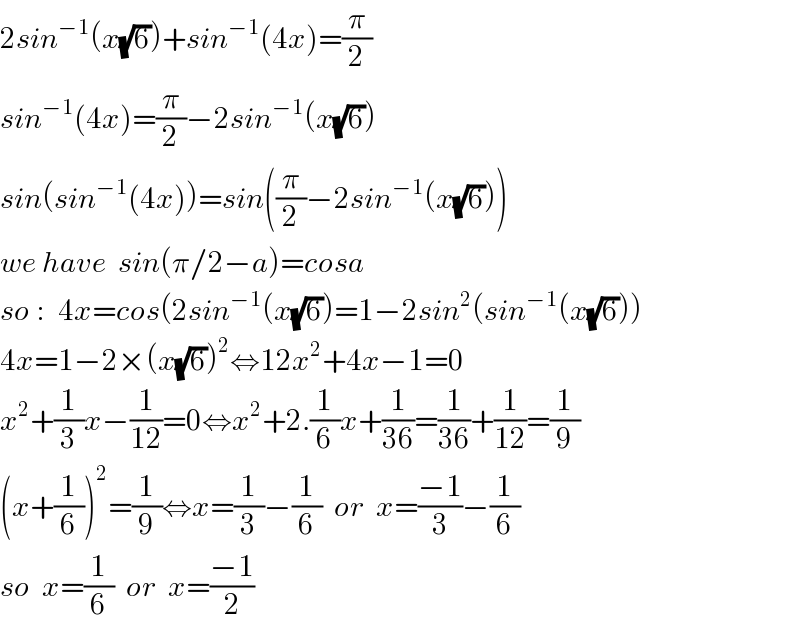
Question and Answers Forum
Question Number 21297 by NECx last updated on 19/Sep/17

Answered by sma3l2996 last updated on 20/Sep/17

Commented by sma3l2996 last updated on 20/Sep/17

Commented by NECx last updated on 20/Sep/17

| ||
Question and Answers Forum | ||
Question Number 21297 by NECx last updated on 19/Sep/17 | ||
 | ||
Answered by sma3l2996 last updated on 20/Sep/17 | ||
 | ||
| ||
Commented by sma3l2996 last updated on 20/Sep/17 | ||
 | ||
Commented by NECx last updated on 20/Sep/17 | ||
 | ||